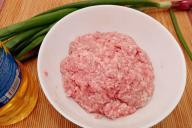To cook eggplant, you first need to remove its bitterness.
It is also important to know which parts of the eggplant should not be present in your dish.
- The skin of the eggplant is edible. When frying or breading the eggplant, do not peel it.

If you peel the eggplant, it will become mushy when fried or breaded, says Yulia Arkhipova .
- The appearance of the eggplant "flesh" should be creamy or pale and free of strange spots. Darkened, warped or bruised parts should be removed, as they have an unpleasant rancid taste.
Do you need to salt eggplants before cooking?
This is quite a controversial issue. Salting eggplant has a number of consequences. First, salt attracts and sucks out the juices from it, which contain bitterness.
In addition, salt tightens, compacts and absorbs, which prevents the eggplant from absorbing a large amount of fat when frying.
New varieties of eggplants do not contain so much bitterness and do not require a large amount of salt. Eggplants brought from Japan, from China, do not need to be treated with salt.
- If you are going to salt the eggplants, cut them into the desired shape before cooking, and then add salt. It is preferable that it be sea salt.
Then drain the water in a colander for at least 1 hour, more is recommended.
Before you put it in a dish, you need to make sure that there is no more salt on it and that it is well washed.
Place the eggplant between two layers of kitchen paper and press lightly to allow the juices from the pulp to be absorbed and dry it out.
If you don't want to salt the eggplant, after cutting it, place it in a glass container. Freeze for 4 hours, then defrost at room temperature and squeeze lightly to release more liquid and remove bitterness.
Earlier we talked about how to thicken liquid jam for baking - you don’t need starch for this.









